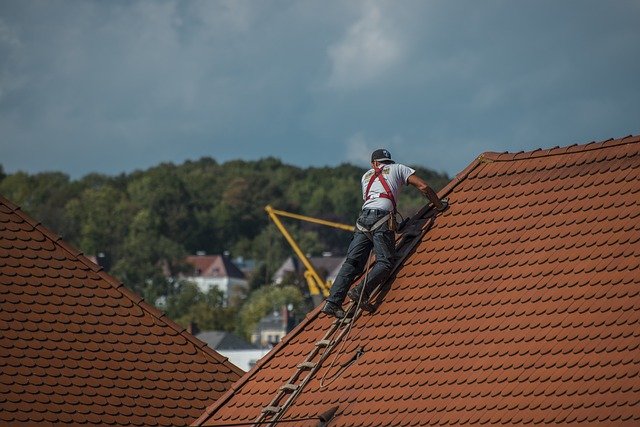Filter maintenance routines that preserve airflow rates
Consistent filter maintenance keeps airflow steady, protects components like furnaces and boilers, and supports overall system efficiency. Below are practical routines, inspection tips, and diagnostics-focused guidance to help maintain vents, ductwork, and safe combustion performance.

Steady airflow is a cornerstone of reliable heating performance. Clean filters reduce strain on blowers, maintain consistent distribution through ductwork and vents, and help preserve ignition and combustion characteristics in furnaces and boilers. A structured routine of inspection and basic diagnostics can prevent efficiency losses and extend component life while maintaining indoor comfort.
How do filters affect airflow and efficiency?
Filters trap dust and particulates that would otherwise accumulate in blowers, heat exchangers, and ducts. When filters become clogged, airflow resistance increases and the system must work harder to move air. That reduces efficiency and can increase cycle times for furnaces and boilers. Reduced airflow also impairs even temperature distribution through vents and can cause thermostat readings to misrepresent occupied spaces. Regular filter attention helps preserve rated efficiency and reduces stress on moving parts.
A well-maintained filter supports steady airflow and consistent combustion by allowing the correct volume of air to reach the burner assembly. In forced-air systems, poor airflow can lower heat transfer efficiency and raise return-air temperatures, which in turn affects ignition timing and combustion stability in some systems.
When should filters be inspected and replaced?
Inspection frequency depends on filter type, household conditions, and system use. Basic fiberglass filters may need checking monthly, while higher-efficiency pleated or electrostatic filters can last longer. Inspect filters during seasonal transitions and whenever a system shows longer run times or reduced airflow at vents. Use inspection to look for visible dirt loading, discoloration, and any signs of moisture or damage.
Replacement intervals should be guided by manufacturer recommendations and observations during inspection. If diagnostics show unusual pressure drop across the filter location or the thermostat cycles erratically, replace or clean filters and re-check airflow and system response.
What maintenance preserves ductwork and vents?
Dust and lint that pass filters settle in ductwork and vents over time, creating blockages and reducing airflow. Keep ducts and vents clear by ensuring filters are sized and installed correctly so they capture a high portion of particulate matter. Periodically visually inspect accessible ducts and registers for dust build-up and uneven airflow patterns.
For visible accumulation or restricted airflow, a professional duct inspection or targeted cleaning can restore performance. Sealing obvious leaks and maintaining proper insulation around duct runs also supports consistent airflow and efficient delivery of heated air to rooms.
How do combustion and ignition relate to filter condition?
Combustion systems rely on controlled air supply to mix with fuel at ignition. While filters don’t directly affect the burner in most centrally located combustion appliances, restricted airflow can lead to pressure imbalances or return-air drafts that influence flame stability. In extreme cases, reduced airflow increases heat exchanger temperatures and change operating conditions, potentially affecting ignition sequences or causing safety interlocks to trigger.
Keeping filters clean helps ensure that fans and draft systems operate as designed, supporting reliable ignition and safer combustion. Include filter checks as part of any combustion-system inspection to spot indirect factors that could alter burner performance.
How to perform simple diagnostics and routine care?
Start with a visual inspection: remove the filter, check for dirt loading and structural damage, and confirm the filter is installed in the correct orientation. Measure airflow qualitatively by noting airflow at several vents and checking whether the thermostat calls trigger expected responses. Use a pressure drop gauge across the filter location if available to quantify resistance and compare to manufacturer specs.
Routine care includes replacing or cleaning filters on a schedule, keeping return grilles unobstructed, and recording observations at each inspection. If diagnostics suggest weak airflow despite a clean filter, check fan operation, belt tension (if applicable), and examine ductwork for leaks or disconnections. When ignition, combustion anomalies, or unusual noises appear, include filter condition in the diagnostic checklist before moving to more invasive testing.
Inspection, diagnostics, and maintaining long-term performance
Incorporate filter checks into a broader inspection routine that also reviews thermostat operation, ductwork condition, vents, and visible combustion components. Diagnostics that combine airflow checks, thermostat behavior, and simple combustion observations give a fuller picture of system health. Consistent filter maintenance reduces the frequency of complex diagnostics and supports reliable operation of furnaces and boilers.
Document inspection dates, filter types used, and any observed changes in airflow or efficiency. That record helps identify trends and supports more targeted interventions if problems recur.
Maintaining filters is a high-impact, low-effort step that sustains airflow, supports safe combustion and ignition, and helps systems run closer to their designed efficiency. Regular inspection and basic diagnostics keep vents, ductwork, and heating equipment performing predictably.





